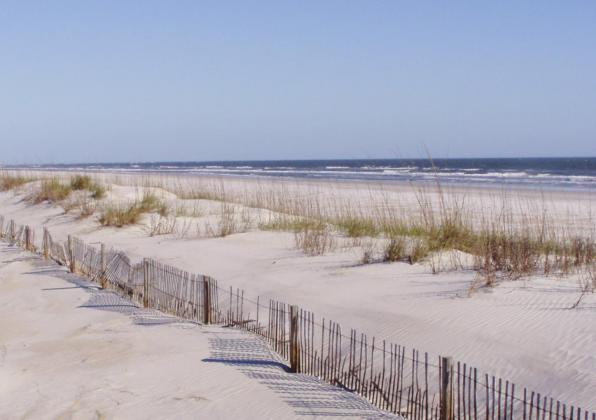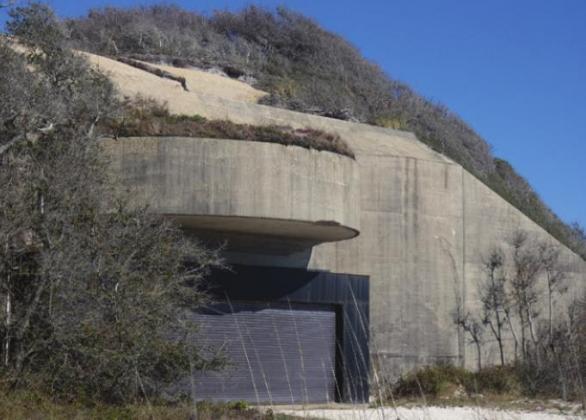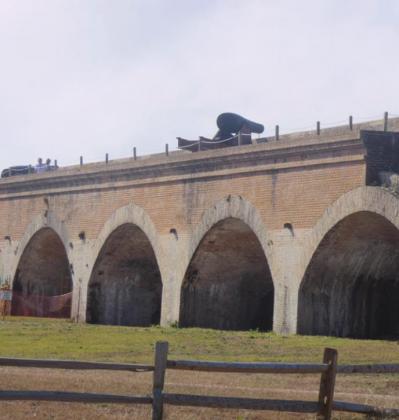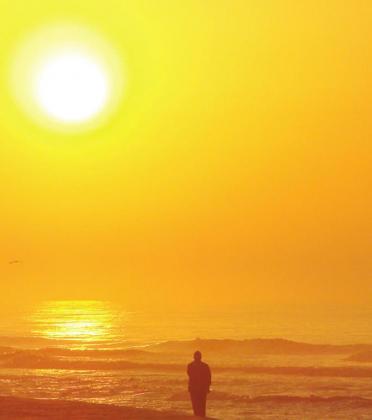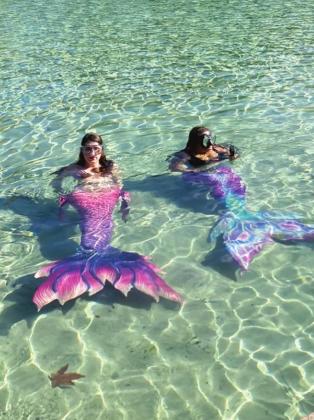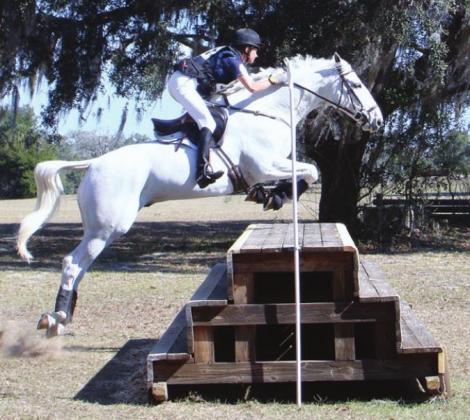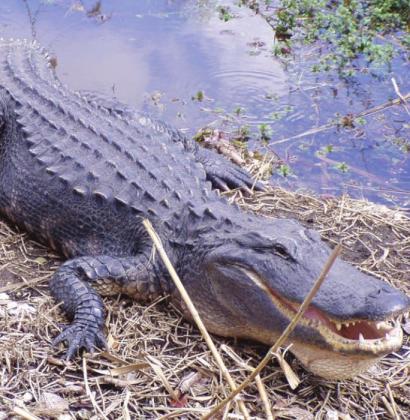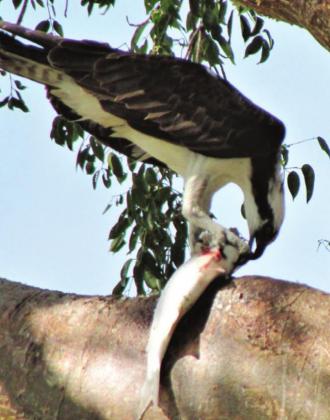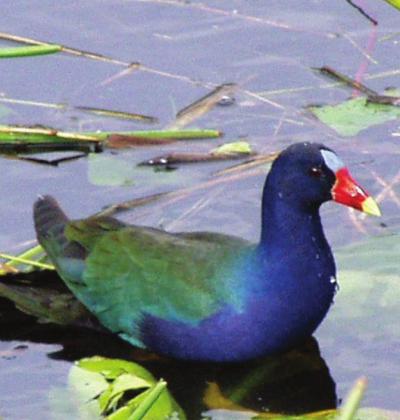Water, water everywhere
FLORIDA IS AN ESPECIALLY POPULAR DESTINATION this time of year, not only for the weather but because of the wonderful beaches. The Florida coastline runs 550 miles down the Atlantic from Jacksonville and 770 up the Gulf side for a total of 1,350 miles. Or 8,436 miles if you include the millions of irregular indents and bump-outs. Technically, coastlines are measured by a fractal curve that retains the same pattern of irregularity no matter how high it is magnified. My source tells me that a “famous example” of the mathematical equation for this is the Mandelbrot set, which is a “fascinating equation that is popular even outside of mathematics for its aesthetic beauty.” Sure it is. (Ask your favorite engineer or other geek to show you the equation and explain it in detail.) Most of us heading for the beach are anticipating a somewhat different form of aesthetic beauty.
For geezers, it may start with the sand itself. (College kids have slightly different priorities.) Barrier islands just offshore tend to have powdery sand that is a joy to walk on or lie in. The best sand beaches are made from the remains of coral driven to shore. Shirley and I are especially fond of the beaches at Anastasia Island across the Bridge of Lions from St. Augustine and Santa Rosa Island offshore from Pensacola, but there are hundreds of others to choose from. Some vacationers prefer resorts that specialize in various forms of revelry, but we are drawn to the miles of far less populated stretches where we can take quiet strolls. True, we have to sacrifice cool beverages brought to the cabana by hotel waiters, but we are happy to substitute the rhythmic pounding of surf, the calls of seabirds, and watching pelicans dive-bombing for fish. Besides, we can have that peaceful seclusion within minutes of a resort community if, like the pelicans, we want some really fresh seafood.
St. Augustine is the oldest continually occupied city in America. It was founded in 1565 as a military outpost to protect Spanish colonies from the English and pirates. The Spanish saw little distinction between them. Castillo de San Marcos National Monument and Fort Matanzas just to the south preserve the oldest stone forts in North America. The Castillo is particularly impressive.
Coincidentally, our other Florida favorite also features a historic fort. At Gulf Islands National Seashore near Pensacola is Fort Pickens, which protected the narrow entrance to Pensacola Bay. The War of 1812, in which Washington was burned, had shown President Madison the vulnerability of a long unprotected coastline, so Pickens, in 1816, became one of many coastal installations. There are also WWII-era shore batteries that defended the Naval Yard from German ships. You might enjoy a tour of the fort. It has been preserved but not Disneyfied by artificial-looking restorations.
But even the secluded beach is not always perfectly quiet. The Naval Air Station across Pensacola Bay is where the Blue Angels train. First thing in the morning we hear reveille echoing across the water. By the time we are finishing breakfast, jets are hitting the afterburners as they climb steeply out over the Gulf. Within seconds they have disappeared. Those training sessions are loud but very brief interruptions to an otherwise tranquil experience.
The National Seashore, including Fort Pickens and the campground of that name, is at the western end of 40-mile-long Santa Rosa Island. The eastern end is a typical resort area with condos, hotels, restaurants and bars, shopping, and boat harbors. So, as at Anastasia, Fort Pickens campers can have a relaxing, peaceful experience with access to all the usual touristy stuff just outside the park gates. Santa Rosa runs east to west, so we benefit from both sunrise and sunset over the water.
But barrier islands are often no more than a few feet above sea level, so if strong onshore winds drive water, there can be flooding. Fort Pickens warns campers that they could be stranded if flooding closes the only road. One year our reservations were canceled because the road was closed by wind-driven sand. They used snow plows to remove it. The sand is so soft and powdery white it actually looks like snow.
But the coastline is just the beginning of ways to find recreational water in Florida. Much of that recreation is associated with the more than 1,000 natural springs—the highest concentration in the world. Water from aquifers flows to the surface under pressure. It emerges extremely clear and at a constant temperature of about 70°, so, compared to the air, it feels warm in winter and cool in summer. In addition to the people who enjoy swimming, snorkeling, and scuba diving, springs attract all kinds of birds and wildlife, including manatees.
Swimmers are not necessarily happy to see all the wildlife though. At Alexander Springs there was a resident gator on the small lake. The woman at the camp store insisted that he would leave us alone if we put a dollar in his tip jar.
In January our itinerary included a week each at Alexander Springs, Juniper Springs, and Salt Springs as we made our way south towards Everglades National Park. Alexander Springs gets a double dip when we return for another five days to attend the Winter Horse Trials at Rocking Horse Stables on our way north again. These three springs are all in Ocala National Forest recreation areas for relatively civilized camping with restrooms, showers, and, at Salt Springs, even electric hookups. There are also 54 state parks in Florida, many of which are located at springs or on spring-fed rivers. They offer exceptional recreation—swimming, boating, fishing, hiking, bicycling, wildlife—and also fall in the civilized category even though some think that camping and civilization are irreconcilable concepts.
There are other options at springs in the back country, somewhat farther removed from civilization both geographically and in the nature of accommodations. Florida has Water Management Districts in which there is free camping if you have the required reservations. (You don’t want to drive miles back a dirt road only to find all six sites taken.) When I booked reservations, Margaret suggested I take one of the equestrian sites because they are larger and more RV-friendly. These campsites are not for everyone because there are no amenities beyond a fire ring and, sometimes, a porta-potty. Some of us appreciate the opportunity for quiet seclusion and don’t absolutely insist on cell coverage.
After our stay at Salt Springs, Shirley said, “Let’s go to Brandon on our way to the Everglades. The Cracker Barrel there gets 5 stars for overnighting.” We appreciate Cracker Barrel restaurants because they have designated RV parking spots and welcome us to stay for free. We say thanks by having supper and/or breakfast the next morning. We have never encountered a CB manager who wasn’t friendly and accommodating, but we check first because some local ordinances forbid the practice. There are 223 Cracker Barrels in Florida, so if you chance upon a rare rejection, there is probably another opportunity within a few miles.
The next stop after Brandon is the Big Cypress National Preserve, which comprises more than 700,000 acres of swamp that was once destined to become the world’s largest airport. Monument Campground has no electric or water hookups at the 26 RV sites, but there are actual restrooms and water spigots. Our motivation for staying there, frankly, used to be its proximity to Everglades National Park. Early the next morning we could reach Long Pine Key Campground as departing campers made sites available. That is no longer an issue because, like just about everywhere, reservations are now required. In addition, when you arrive, they assign you a site rather than let you choose your own. But that is the least of the changes.
The Everglades is actually a very shallow river about 60 miles wide by 100 miles long that drains the area south of Lake Okeechobee. Because of the extremely gentle slope of the land and vegetation that further slows its pace, the water moves at only about three feet an hour. A casual observer would say it is not moving at all.
In 1947, Congress passed legislation for the Flood Control Project that drained the swamp by diverting water through a canal system that made possible the South Florida we know today: cities and subdivisions, retirement communities, sugar cane fields, citrus groves, fruit and vegetable farms, recreation and tourism. Before then, the offer to “sell you some land in Florida” was synonymous with “how would you like to own the Brooklyn Bridge?” About 1.5 million acres of the
Everglades are now in the national park of that name. During winter, what Floridians call the “dry season,” much of the swamp dried up and water collected only in the deeper holes. Wildlife gathered at these holes of necessity. Tourists gathered to admire wildlife that tolerated their presence because they had no choice.
In 2000, various federal and state environmental agencies decided that draining the swamp had deleterious consequences. East-west roads had become, in effect, dams that further interrupted water flow. So, $10.5 billion was spent restoring something closer to natural conditions. The Tamiami Trail was raised on pilings so water could flow beneath it. Lesser roads had numerous culverts installed. The Kissimmee River had been straightened and turned into a canal. The canal was filled in and the Kissimmee turned back into a river.
All of this restoration work has unquestioned environmental benefits. The chief benefit from the animals’ point of view is they are no longer forced to congregate in a limited number of water holes. And they don’t have to tolerate humans, so they don’t. There are just as many birds and gators, but they are dispersed through inaccessible areas of the park. The downside, of course, is that tourists don’t have the same experience that was available before the swamp was fixed. But the quality of the experience is relative. Here’s a faulty analogy: Visitors to Yellowstone get excited when they see a herd of a hundred or so bison. But consider what the experience would have been like when the herds numbered in the millions. If you did not visit the Everglades 10 or 20 years ago, you will never know what you’re missing and will still be impressed.
Shirley and I went to Florida for the first time in the ‘80s when I had business in Miami. While there, we took the rental car to nearby Everglades National Park. Oh, my! Great blue herons, little blue herons, green herons, tri-color herons. Ibises both white and glossy. Purple gallinules and the common variety. Trees turned white by flocks of egrets. Storks, stilts, and roseate spoonbills. Cormorants and anhingas catching fish underwater, and ospreys hovering and then diving for them. Dozens of gators snoozing in the sun and out cruising for their lunch. Turtles both hard-shell and their ugly stepsisters the soft-shells. Serpents of various malignity.
So, in retirement, Everglades NP became our primary winter destination until we discovered the glories of Arizona. This year, the dramatic increase in drug running (fentanyl is now the leading cause of death among those 18 to 45) and human trafficking have taken the luster off our favorite remote camping destinations near the border. Until those issues are resolved, we’ll try to get by with the beaches, springs, and back-country campsites that still make winter in Florida just a walk in the park.
LeMoyne Mercer is the travel editor for Healthy Living News. If you are contemplating a trip, you might want to see photos of numerous destinations on his blog, AnotherWalkinthePark.blogspot.com.

